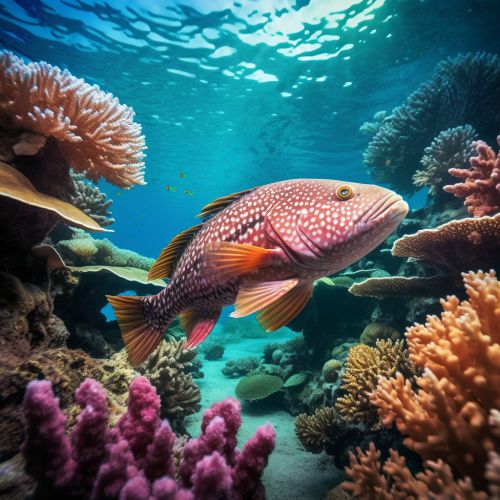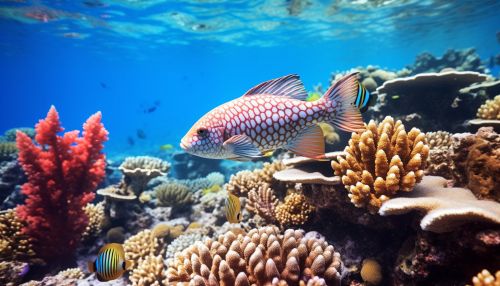Coral grouper
Classification and Description
The coral grouper (Plectropomus leopardus) is a species of marine ray-finned fish, a grouper from the subfamily Epinephelinae which is part of the family Serranidae, which also includes the anthias and sea basses. It is found in the Indo-Pacific region. The coral grouper is a popular and commercially important fish, highly prized by both commercial and sports fishers.


Physical Characteristics
The coral grouper is a large fish that can reach a maximum length of 120 cm, but the average size is usually around 60 cm. The body is compressed laterally and is relatively high. This grouper's mouth is large and has a slightly protruding lower jaw. The dorsal profile of the head is convex. The preopercle is rounded and has a well-developed lobe at its angle, which is a diagnostic feature of this species. The dorsal fin contains 7 to 8 spines and 10 to 12 soft rays while the anal fin has 3 spines and 8 soft rays. The caudal fin is rounded. The overall color is pale to dark brown, becoming paler ventrally, with numerous small blue spots which are circular or polygonal, these are often encircled with darker blue.
Distribution and Habitat
The coral grouper is widely distributed throughout the tropical waters of the Indo-Pacific region, from the eastern coast of Africa to the Polynesian islands, and from south Japan to New Caledonia. They are also found in the waters around Australia, and from the Red Sea to the Micronesian islands. The species is most commonly found in coral reefs and can be found at depths of from 2 to 60 meters.
Diet and Behavior
Coral groupers are carnivorous, feeding primarily on other small fish. They are ambush predators, hiding in the coral and then surprising their prey. They have a unique hunting strategy in which they cooperate with other species, like the moray eel, to flush out prey from reef crevices. This behavior, known as interspecies cooperative hunting, is rare in fish.
Reproduction
Coral groupers are protogynous hermaphrodites, meaning they begin life as females and change sex to male later in life. They reproduce through a behavior known as spawning, where the female releases her eggs and the male releases his sperm into the water at the same time. This usually occurs at specific times of the year and is often associated with the lunar cycle and the tide.
Conservation Status
The coral grouper is currently listed as Near Threatened on the IUCN Red List. The main threats to this species are overfishing and habitat loss due to coral reef destruction. Conservation efforts are currently focused on establishing marine protected areas and managing fishery practices to ensure sustainable populations of the coral grouper.
